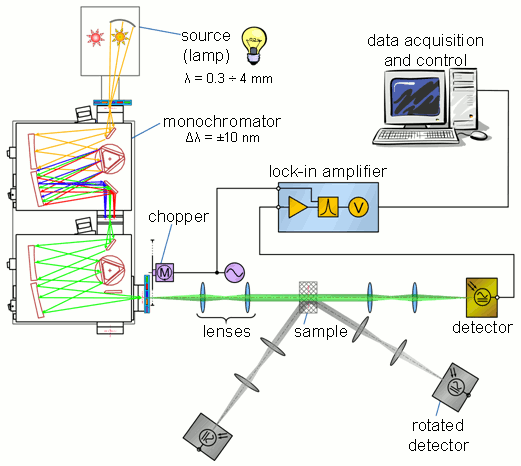RADLAB – Spectroscopic Goniometry System for determining Thermal Radiative Properties of Participating Media
Funding source: external page Swiss National Science Foundation
Task description – The aim of the radiation heat transfer laboratory (RADLAB) is to experimentally determine the radiative properties of fluidized beds, packed beds, aerosol flows, porous structures, reticulate ceramics, micro channels, and other solid-gas configurations used in high-temperature solar reactors. For this purpose spectroscopy systems and associated data evaluation methods are being developed. Parameters of interest are the spectral extinction coefficient, the absorption coefficient, the scattering phase function, and the bi-directional reflectivity as a function of wavelength and direction.
Current system – The current system comprises a double VIS-IR lamp coupled to a double monochromator as the radiation source, collimating/focusing lenses, a sample group, and a detector. It enables measuring the intensity distribution in the wavelength range 0.3–4 μm for materials of moderate optical thickness such as reticulate porous ceramics and particle clouds. For materials of larger optical thickness, such as densely packed beds, the wavelength region is more limited and typically lies within 0.4–2 μm.
System extension – Planned extensions aim at allowing measurement of wavelengths up to 10 μm and at performing measurements on heated samples. This will allow obtaining the radiative properties in the entire wavelength range of interest for solar thermal energy applications.
